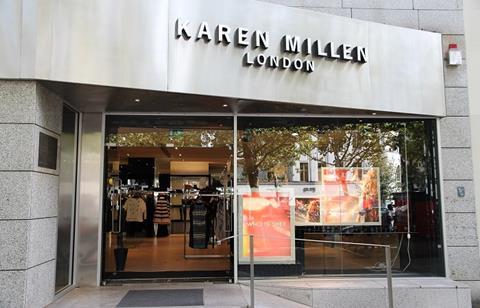
Fashion brand Karen Millen has reported a 50% mean gender pay gap for fixed hourly pay.
The organisation reported its gender pay gap data in line with the government’s gender pay gap reporting regulations and in time for the private sector submission deadline of 4 April 2018.
The gender pay gap reporting regulations require organisations with 250 or more employees to publish the difference between both the mean and median hourly rate of pay for male and female full-time employees; the difference between both the mean bonus pay and median bonus pay for male and female employees; the proportions of male and female employees who were awarded bonus pay; and the proportions of male and female full-time employees in the lower, lower middle, upper middle and upper quartile pay bands.
Karen Millen’s median gender pay for fixed hourly pay is 49%.
Its mean gender pay gap for bonuses paid during the reporting period is 30% in favour of women, and the median gender pay gap for bonus payments is 96%. Over this time frame, 8% of both female and male employees received bonus payments, which equates to 58 women and four men.
More than four-fifths (84%) of employees in the highest pay quartile at Karen Millen are female, compared to 95% in the second quartile, 97% in the third quartile and 98% in the lowest pay quartile. Karen Millen’s total workforce of 759 employees comprises of 94% female staff and 6% male staff. Around 80% of its leadership team are women.
Karen Millen attributes its gender pay gap to the distribution of male and female employees at the organisation. For example, the majority of the overall headcount at Karen Millen are women, with most of these employees occupied in lower-paid stylist roles across the UK. The minority of male employees, on the other hand, work mainly in head office-based roles, which typically tend to be higher paid. The organisation’s analysis shows that if head office roles are excluded from the final gender pay gap data, Karen Millen’s gender pay gap decreases to 6%.
In addition, the larger proportion of females employed in the organisation’s retail arm means that more women are being paid retail bonuses, which impacts the bonus gender pay gap. The majority of these bonus payments are of a lower value amount than the bonuses typically received by head office staff.
Beth Butterwick, chief executive officer at Karen Millen, said in the report: “We’re proud to be a business with a female [chief executive officer] and [chief financial officer], and a leadership team which is 80% female. However, we recognise we can do more to champion diversity at all levels of our business and ensure everyone can build and sustain a successful and rewarding career.
“We’re re-engineering our recruitment strategy, to ensure we can attract a wide range of potential employees underpinned in the knowledge that Karen Millen is a great place to work for everyone, regardless of age, gender or ethnicity. We look forward to creating a more diverse workforce and helping to build a solid pipeline of future leaders in retail.”











